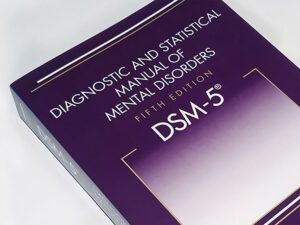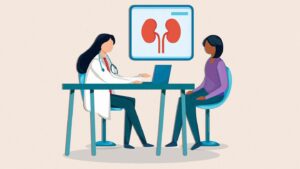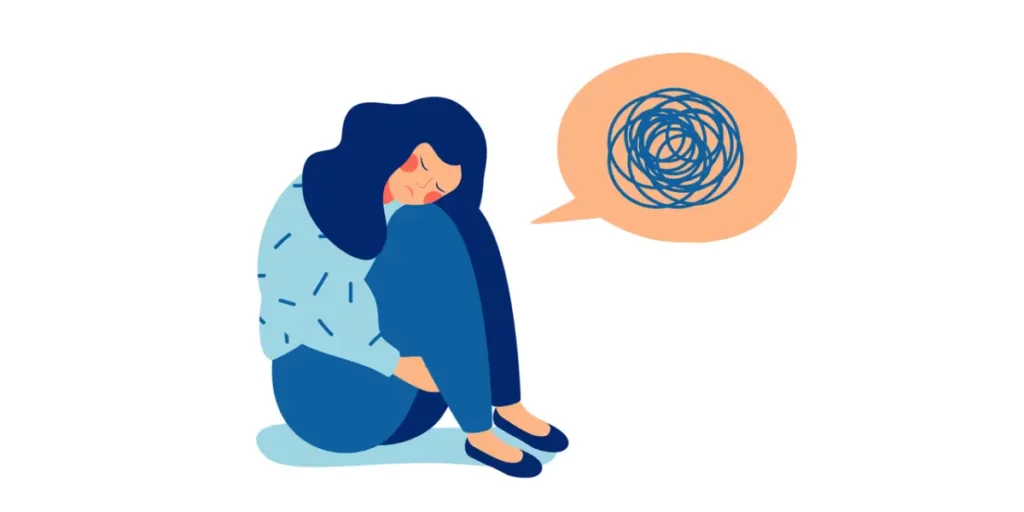Anxiety disorders are the most common mental health condition in the United States, affecting 40 million adults each year.1 Up until now, there have been no specific diagnostic criteria for anxiety disorders in the Diagnostic and Statistical Manual of Mental Disorders (DSM-5). This changes with the release of DSM-5, which includes new diagnostic criteria for six different types of anxiety disorders. In this blog post, we will discuss these new diagnostic criteria and what they mean for people who suffer from anxiety disorders.
Contents
What Is Anxiety According To DSM-5?
 The fifth edition of the Diagnostic and Statistical Manual of Mental Disorders (DSM-V) was published in 2013 by the American Psychiatric Association. This version included some significant changes to the way anxiety disorders are diagnosed.
The fifth edition of the Diagnostic and Statistical Manual of Mental Disorders (DSM-V) was published in 2013 by the American Psychiatric Association. This version included some significant changes to the way anxiety disorders are diagnosed.
According to DSM-5, anxiety is described as “an emotion characterized by feelings of tension, worried thoughts, and physical changes like increased blood pressure.” To be diagnosed with an anxiety disorder, a person must experience this type of anxiety regularly and it must interfere with their daily life.
Previously, there were three main types of anxiety disorders recognized in the DSM:
- Generalized anxiety disorder (GAD)
- Panic disorder
- Social anxiety disorder (SAD)
However, DSM-V combined these into one category called “anxiety disorders.” GAD is still recognized as a subtype of anxiety disorder, but the other two are now considered to be types of phobias.
What Are The DSM-5 Criteria For Anxiety?
The DSM-IV-TR, published in 2000, listed six specific anxiety disorders: separation anxiety disorder, generalized anxiety disorder (GAD), social phobia, panic disorder, agoraphobia, and specific phobias. The new DSM-V has combined some of these disorders and changed the diagnostic criteria for others.
The new DSM-V has a single category of anxiety disorders that includes the following:
- Separation anxiety disorder
- Selective mutism
- Specific phobia
- Social anxiety disorder (social phobia)
- Panic disorder
- Agoraphobia
- Generalized anxiety disorder (GAD)
The criteria of DSM-5 anxiety are as follows:
- Persistent fear of one or more social or performance situations in which the person is exposed to unfamiliar people or to possible scrutiny by others. The individual fears that he or she will act in a way (or show anxiety symptoms) that will be embarrassing and humiliating.
- Exposure to the feared situation almost invariably provokes anxiety, which may take the form of a situationally bound or situationally predisposed Panic Attack.
- The person recognizes that this fear is unreasonable or excessive.
- The feared situations are avoided or else are endured with intense anxiety or distress.
- The avoidance, anxious anticipation, or distress in the feared social or performance situation(s) interferes significantly with the person’s normal routine, occupational (academic) functioning, or social activities or relationships, or there is marked distress about having the phobia.
- In individuals under the age of 18 years, the duration is at least months. For children aged months to less than 18 years, the required duration is at least months.
- Fear or avoidance is not due to the direct physiological effects of a substance (e.g., a drug of abuse, a medication) or a general medical condition not better accounted for by another mental disorder.
- The disturbance is not better explained by the presence of a Panic Disorder With Agoraphobia or Generalized Anxiety Disorder.
As per these criteria, the diagnosis of anxiety can be made only when an individual has all of the above-mentioned symptoms for a period of at least six months. The new DSM-V also requires that the person experiencing these symptoms should recognize that their fear is unreasonable or excessive.
Who Can Diagnose Anxiety From DSM-5?
 The answer to this question is a qualified mental health professional, such as:
The answer to this question is a qualified mental health professional, such as:
- Psychiatrist
- Psychologist
- Licensed clinical social worker
This professional will have extensive training in diagnosing mental disorders and will be familiar with the DSM-V criteria for anxiety disorders. They will also be able to rule out any physical causes of your symptoms. More often than not, they are experienced and qualified to provide you with treatment options as well.
These all are well-qualified to provide an accurate diagnosis of anxiety from DSM-V. If you are experiencing anxiety and would like to seek professional help, please contact one of these qualified mental health professionals in your area. With proper diagnosis and treatment, most people with anxiety disorders can lead normal, fulfilling lives. Don’t wait to get help – anxiety disorders are treatable!
How Is It Diagnosed?
The diagnosis is a very difficult task. The clinician has to go through a different process in order to diagnose it. There are different types of anxiety disorders and each one of them has a different set of symptoms. To make a diagnosis, the clinician uses a few methods.
The most important one is the clinical interview. This is where the clinician will ask you a series of questions about your symptoms, how long you have had them, and how they have impacted your life. They will also want to rule out any other possible causes of your symptoms.
The second method that clinicians use is psychological testing. In some cases, they will give you a questionnaire to fill out that will help them get a better understanding of your symptoms. They may also give you some tests that measure your anxiety levels.
The third method is physical examination. The clinician will want to rule out any other medical conditions that could be causing your symptoms. They will also do a basic physical examination to check for any signs of anxiety.
Once the clinician has gathered all of this information, they will then make a diagnosis based on the criteria in the DSM-IV. If you meet the criteria for an anxiety disorder, then you will be diagnosed with that disorder.
What Can You Do After Diagnosis?
 There are a few things you can do after being diagnosed with an anxiety disorder. Some of these things include:
There are a few things you can do after being diagnosed with an anxiety disorder. Some of these things include:
Talk to your doctor
After you have been diagnosed, it is important to talk to your doctor about your treatment options. They can help you decide which medication or combination of medications is right for you. For example, you can ask about side effects, how long the medication will take to work, and if there are any alternatives.
Create a support system
Having a strong support system is important when managing an anxiety disorder. This can be made up of family, friends, or even online support groups. These people can offer you emotional support and practical advice.
Change your lifestyle
Making some lifestyle changes can also help you manage your anxiety. This may include things like eating a healthy diet, exercising regularly, and getting enough sleep. These changes can help to reduce stress and improve your overall well-being. More often than not, anxiety is caused by stress. So, by reducing your stress levels, you can help to reduce your anxiety.
Take therapy
Anxiety can be a debilitating disorder, but some treatments can help. Psychotherapy is one of the most effective treatments for anxiety disorders. Cognitive-behavioral therapy (CBT) is a type of psychotherapy that is particularly effective in treating anxiety disorders. CBT focuses on helping people identify and correct the negative thoughts and beliefs that contribute to their anxiety.
Medications
 Medication can also be an effective treatment for anxiety disorders. Antidepressants, anti-anxiety medications, and beta-blockers are all commonly prescribed to treat anxiety disorders. Some people with anxiety disorders may also benefit from supplements or herbal remedies.
Medication can also be an effective treatment for anxiety disorders. Antidepressants, anti-anxiety medications, and beta-blockers are all commonly prescribed to treat anxiety disorders. Some people with anxiety disorders may also benefit from supplements or herbal remedies.
While there is no cure for anxiety, with treatment most people with anxiety disorders can manage their symptoms and live healthy, productive lives. If you think you may have an anxiety disorder, talk to your doctor or mental health professional. They can help you get an accurate diagnosis and create a treatment plan that works for you.
Conclusion
To conclude, DSM-5 anxiety is a new diagnostic criterion for anxiety disorders that will be used by mental health professionals to diagnose and treat patients. This change is important because it will help to standardize the diagnosis of anxiety disorders and ensure that patients receive the best possible care.
While there are some drawbacks to this new system, overall it is a positive change that will improve the lives of those suffering from anxiety disorders. If you or someone you know is struggling with anxiety, be sure to talk to a mental health professional about treatment options. With the help of a qualified therapist, you can begin to take control of your anxiety and live a happier, healthier life.
For more information and guidance, please get in touch with our expert therapists at Therapy Mantra. They will be more than happy to assist you on your journey to recovery. Contact us today to learn more about our services. You can also book an online therapy session or download our free Android or iOS app.


